Welcome, ladies and gentlemen, to a captivating expedition into the enigmatic world of our curious and agile cousins of the animal kingdom – the monkeys! As we embark on this enthralling adventure, one intriguing question beckons us: How do these charming creatures sleep?
Join us as we delve into the intriguing sleep habits of these delightful beings, uncovering the wonders and mysteries that lie within their nocturnal realm.
Sleep Needs Vary with Species
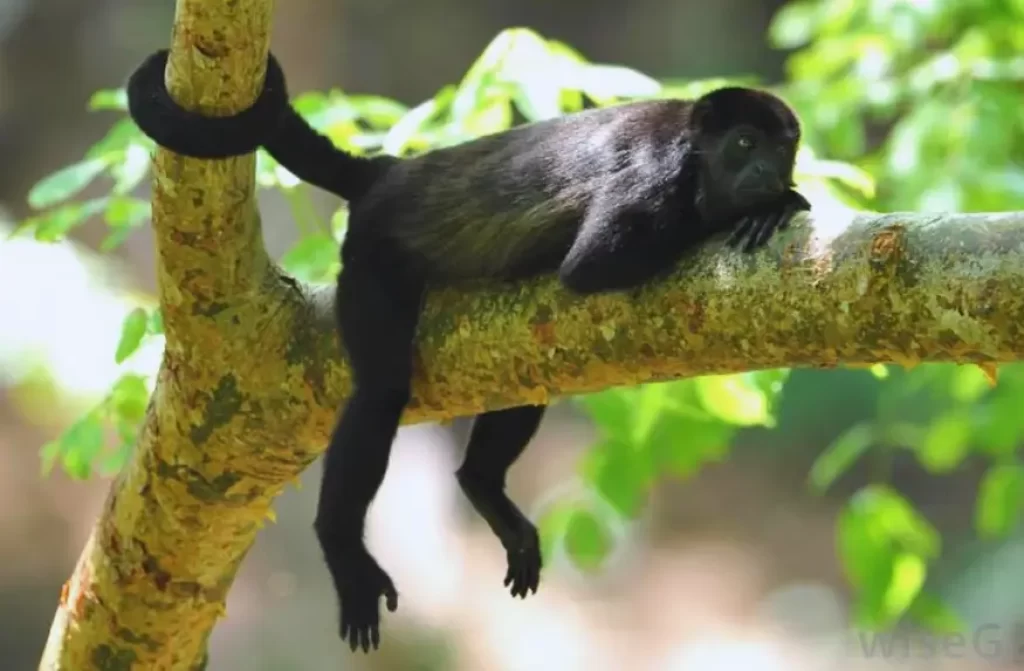
Much like us, monkeys require sufficient sleep to thrive in their natural habitats. However, the duration of their slumber may differ significantly depending on their species and the environments they inhabit.
While some monkeys indulge in a peaceful slumber of approximately 9 to 10 hours per day, others find contentment with less or more rest. This diversity in sleep patterns mirrors the rich tapestry of life found within the vast monkey family.
The Nocturnal vs. Diurnal Divide
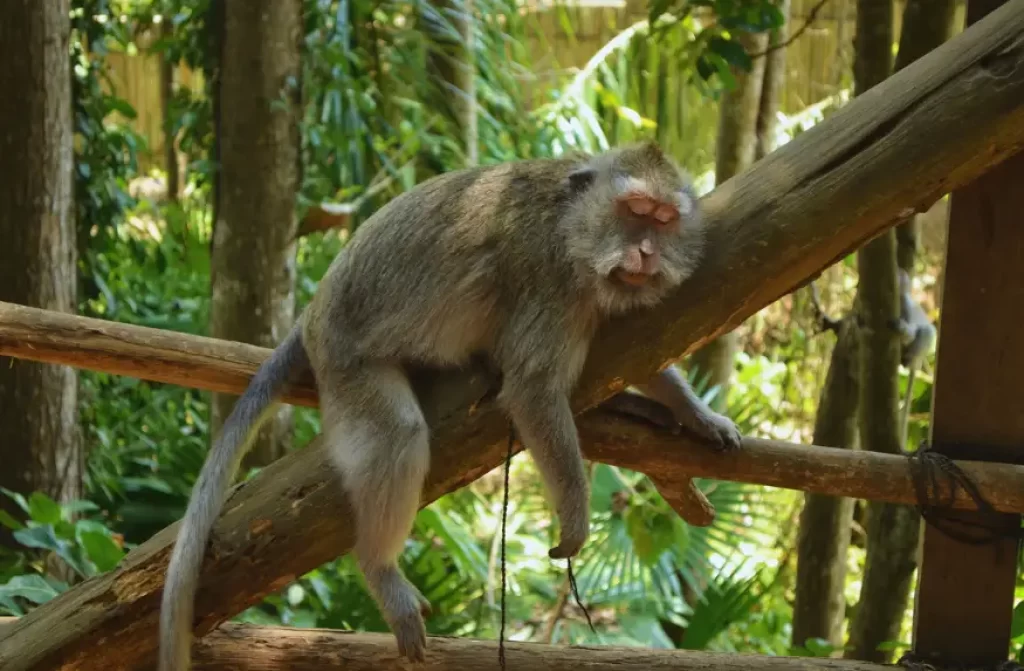
Within the primate world, we encounter two distinct camps: the nocturnal and the diurnal monkeys. The nocturnal monkeys find solace in slumber during the day, embarking on their nightly escapades under the moon’s gentle glow.
In contrast, the diurnal monkeys align themselves with the rhythm of daylight, preferring to rest at night and dazzling us with their playful antics during the sunlit hours. This division showcases the adaptability and resourcefulness of these remarkable creatures in harmonizing with their environments.
How do monkeys sleep? Check the video!
In this video, we’ll take you on a wild adventure into the fascinating world of monkey sleep patterns. From tree-dwelling acrobatics to cozy cave snuggles, you’ll discover the quirky and cool ways these cheeky creatures catch their beauty sleep.
So, if you’re up for some monkey business and want to dive into a world of fun facts and adorable snoozing monkeys, this video is a must-watch! Grab your popcorn, kick back, and join us on this wild and sleep-filled journey.
An Abode of Dreams: Where do Monkeys sleep?
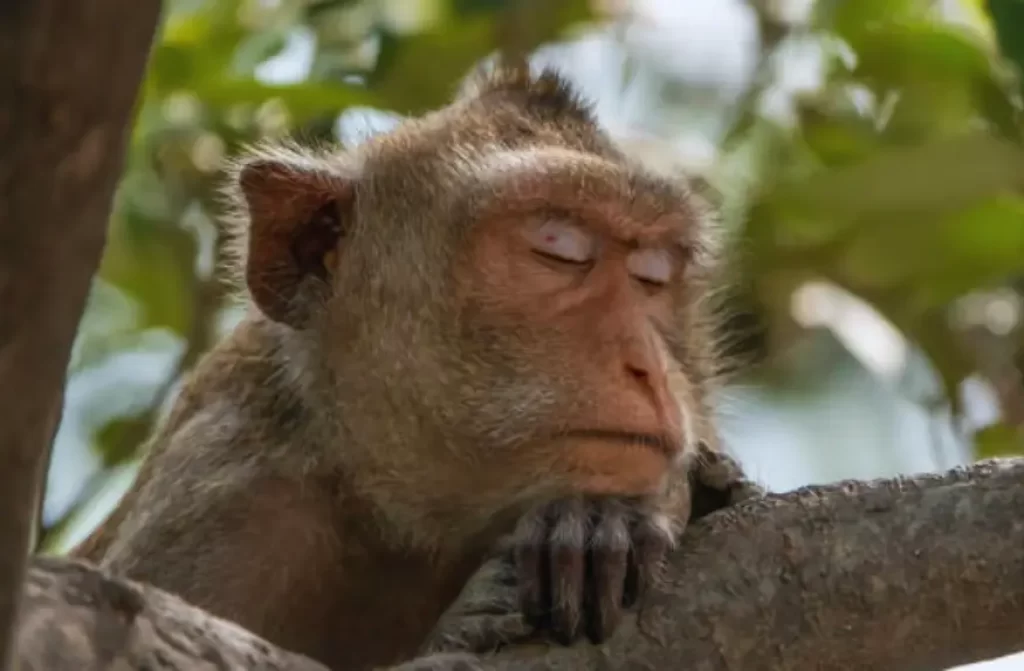
So, you’re wondering where monkeys catch some Z’s, huh? Well, it all depends on the monkey and where they call home sweet home. Some of these cheeky creatures love to snooze up in the trees. Yep, you heard that right – they build cozy nests or find snuggly spots among the branches to catch some shut-eye, safe from any lurking predators.
Others, like those cool capuchin monkeys, might prefer hanging out in tree hollows or chilling in caves for their beauty sleep. But wait, there’s more! You’ve got ground-dwelling monkeys too, like baboons and mandrills, who may choose to sleep right on the earth or bunk down in a comfy cave.
Social Slumber: Strengthening Bonds and Ensuring Safety
Monkeys are inherently social creatures, and this camaraderie extends even to their moments of slumber. To fortify their social bonds and ensure safety, many monkey species opt to huddle together when it’s time to catch some Zs.
By sleeping in close proximity, they discover not only comfort but also a clever method to conserve body heat during chilly nights. This communal approach to rest underscores the value of connection and unity within monkey communities.
The Art of Slumber: A Symphony of Postures
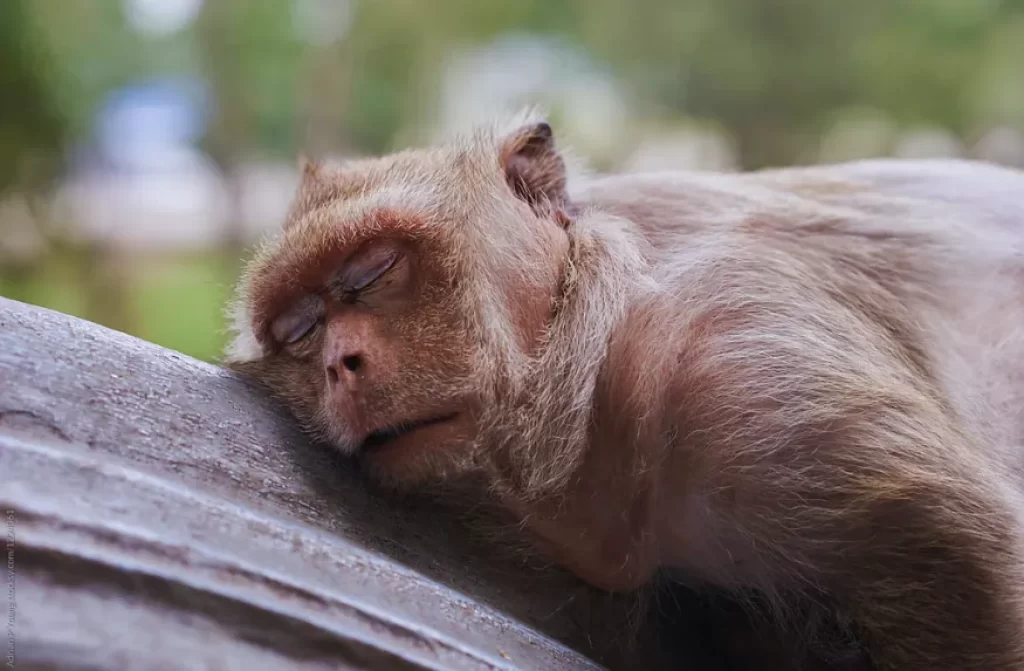
In the realm of sleep, monkeys showcase an awe-inspiring symphony of postures. Whether it’s lounging gracefully, sitting with an air of tranquility, or embracing serene repose while lying down, these gifted primates demonstrate an appreciation for relaxation in all its forms.
And yet, a select few possess an extraordinary talent – sleeping while hanging from branches! With their nimble feet firmly gripping the arboreal perches, they find serenity amid the swaying treetops, an astonishing spectacle to behold.
The Mystery of Dreams: Embracing REM Sleep
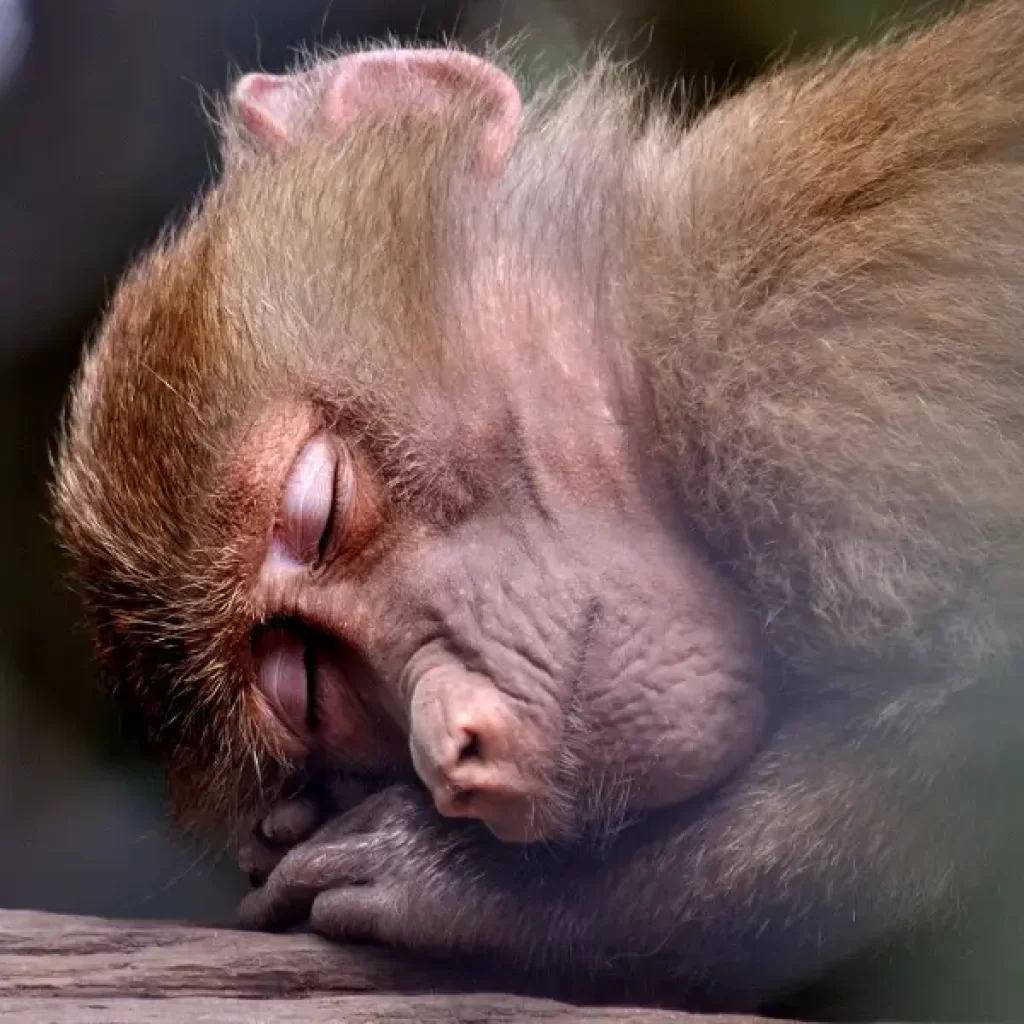
Ah, dreams! Just like us, monkeys experience the realm of Rapid Eye Movement (REM) sleep, a phase known for its vivid and mysterious dreams, accompanied by rapid eye movements.
During this enigmatic stage of slumber, who can fathom the wondrous and fantastical visions that grace their nocturnal escapades? As they sway gently in their arboreal beds, one can’t help but wonder about the marvels that fill their monkey dreamscapes.
Vigilant Slumber: Navigating the Wild World

Even amidst their repose, monkeys remain attuned to the rhythm of the natural world, always on the lookout for lurking predators or potential dangers.
This vigilance during slumber underscores the survival instincts ingrained in these remarkable beings, perpetually safeguarding themselves and their cherished group members.
Conclusion
And so, we come to the end of our enchanting tale of how monkeys sleep. Their lives are filled with wonder and amazement, and through this journey, we find an unexpected connection – a shared realm of dreams and the yearning for restful solace.
Let us cherish and respect all living beings, recognizing that each holds a unique and captivating sleep story to tell. Thank you for joining us on this enthralling exploration into the mysterious world of monkey slumber.
FAQ
What is the sleep pattern of a monkey?
Monkeys are generally diurnal, sleeping at night and being active during the day. They typically sleep for around 9 to 10 hours per night and may take short naps during the day. Some species, like owl monkeys, are nocturnal and sleep during the day while being active at night. Sleep patterns can vary between species based on their behavior and environment.
How long do monkeys nap for?
Monkeys often take short naps during the day, which can last anywhere from a few minutes to a couple of hours.
The duration of their naps can vary depending on factors such as their species, age, activity level, and environmental conditions. Some monkeys may take several short naps throughout the day, while others may have longer periods of rest.
The length of their naps also depends on their safety and comfort level in their surroundings. Overall, monkeys are quite adaptable in their sleep patterns and adjust their napping duration accordingly.
Do monkeys have a circadian rhythm?
Yes, monkeys, like most mammals, have a circadian rhythm. A circadian rhythm is an internal biological clock that regulates various physiological processes, including the sleep-wake cycle. It is influenced by external cues, such as light and darkness, and helps animals synchronize their activities with the day-night cycle







